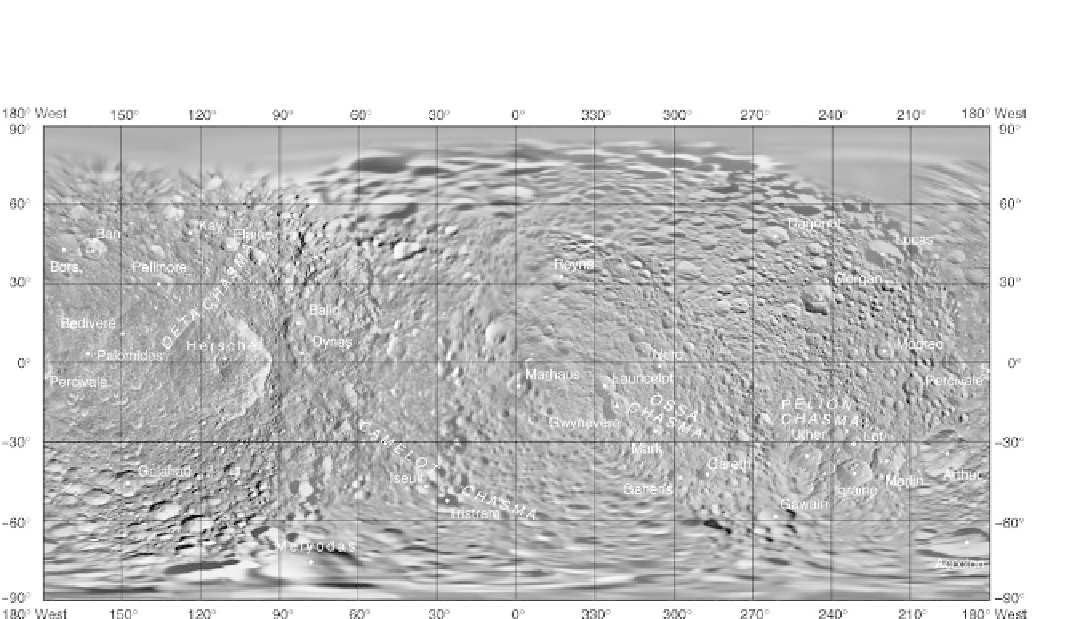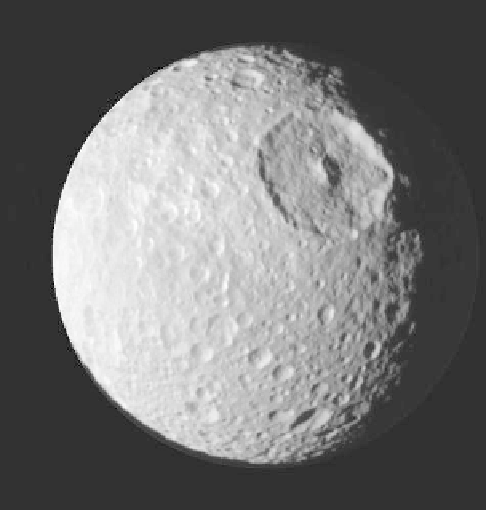Geology Reference
In-Depth Information
Figure 9.22. A mosaic of Cassini images of Mimas with key place names (from Roatsch et al.,
2009
).
between two rings and is considered to be responsible for
keeping the zone free of small particles. Mimas
density
is only slightly greater than that of water (1.15 g/cm
3
),
suggesting that it is composed mostly of water-ice with
only small amounts of rocky material. With a diameter of
396 km, it is nearly the same size as Enceladus, and these
two neighbors present a remarkable contrast in geology,
despite being in the same size class. While Enceladus is
geologically active and displays terrains that are young,
Mimas is not differentiated, shows no evidence of internal
activity, and has an impact crater frequency among the
highest in the Solar System.
Impact craters range in size from the limit of detection
(~1 km) to the 140 km impact crater Herschel, which is
nearly one-third the size of the moon (
Fig. 9.23
). Crater
Herschel is 10 km deep and has a central peak that rises
6 km above its rugged
floor. Cassini images show exten-
sive mass wasting on the walls of Herschel and other large
craters. This form of gradation includes massive slump
blocks and downslope movement of debris, visible as
albedo streaks. Although Mimas is heavily cratered, the
size
'
Figure 9.23. A Cassini image of Mimas and the 140 km impact crater,
Herschel (NASA PIA06285).
frequency distributions vary somewhat by location,
with the south polar region having a paucity of impacts of
diameter >20 km. While various ideas have been proposed
to explain this observation, it is plausible that larger
impacting bodies are excluded from striking this area
due to orbital geometries.
-
Various grooves (chasmata), some as large as 100 km
by 6 km, are visible on Mimas and are exempli
ed by
Camelot and Ossa Chasmata. Most of the grooves are
probably associated with the impact of Herschel crater,
in which deformation approximately radial to the crater



